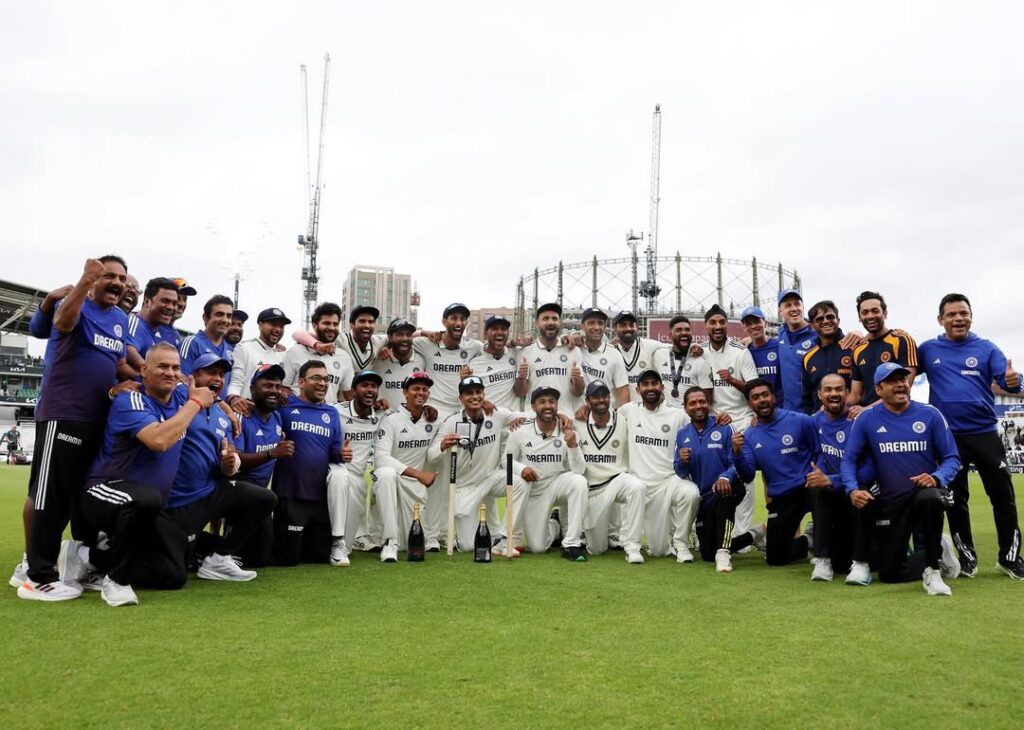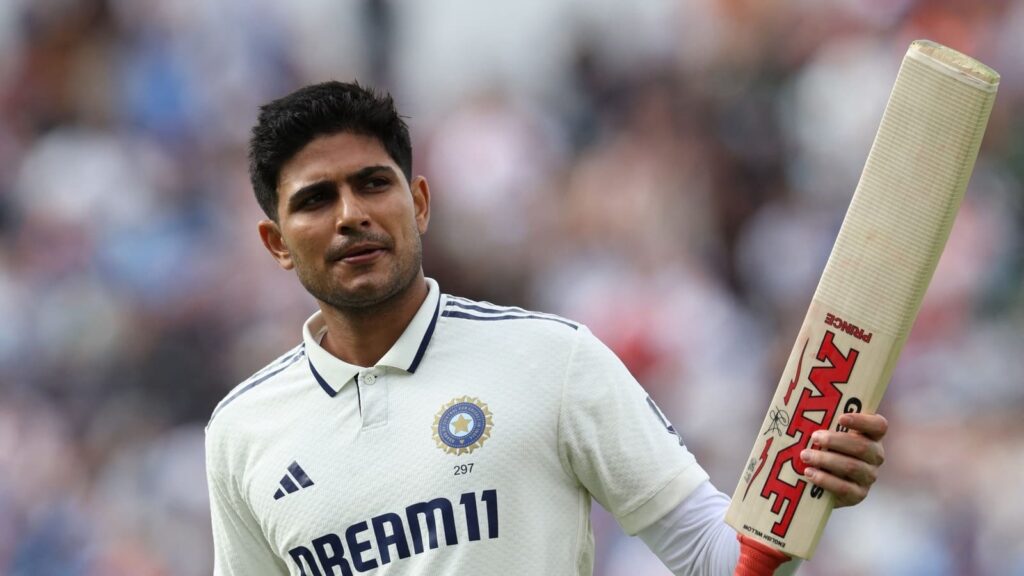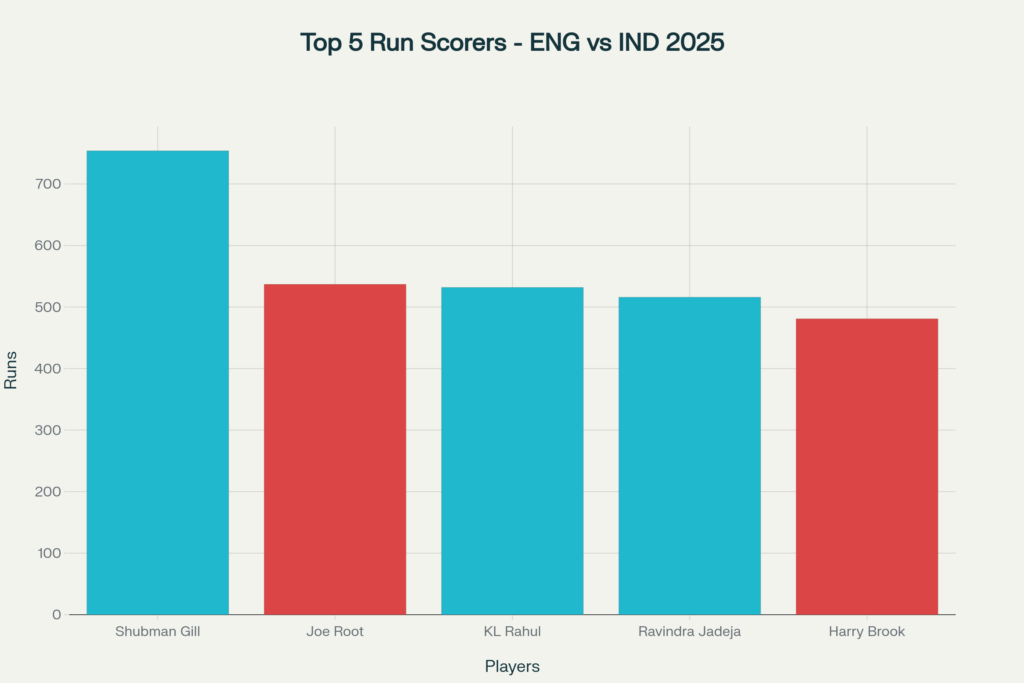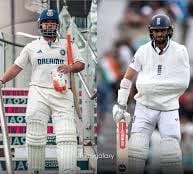The England India Test series 2025 has delivered one of the greatest Test cricket battles in recent history. This in-depth review of the five-match England vs India Test series 2025 highlights remarkable performances, captaincy decisions, key batting and bowling displays, and the controversies—especially those involving DRS and on-field spirit—that defined this epic contest. As cricket fans reflect on the results, it’s clear that the England India Test series 2025 will be remembered for years as an exemplar of resilience, skill, and drama.

Series Overview and Match Results
The five-match series was a grueling test of endurance, skill, and mental fortitude, with every single Test extending to the fifth day – a rarity in modern cricket. England began as favorites but found themselves in a titanic struggle against a young Indian side led by first-time captain Shubman Gill.
Match-by-Match Results:
- 1st Test (Leeds): England won by 5 wickets, successfully chasing down 371 runs
- 2nd Test (Birmingham): India won by 336 runs, their biggest victory margin away from home
- 3rd Test (Lord’s): England won by 22 runs in a nail-biting finish
- 4th Test (Manchester): Draw, with India saving the match through centuries from Jadeja and Washington Sundar
- 5th Test (The Oval): India won by 6 runs, their narrowest Test victory ever
The series featured over 7,000 runs scored and a record-tying 21 individual centuries, showcasing the highest quality of batsmanship under challenging conditions. Every match was decided by fine margins, with England losing by just 6 runs in the final Test after needing only 35 runs with four wickets in hand
Captaincy Analysis

Shubman Gill’s Leadership Debut
At 25, Shubman Gill faced the daunting task of leading India in England for his captaincy debut, a challenge that few Indian captains have successfully navigated. His leadership was tested from the outset, dealing with the absence of key players like Virat Kohli and Rohit Sharma while managing a transitional bowling attack.
Gill’s Captaincy Highlights:
- Led from the front with the bat, scoring 754 runs at an average of 75.40
- Showed composure under pressure, particularly during the final Test
- Successfully managed bowling rotations despite having only three main pacers for most Tests
Legendary Sachin Tendulkar praised Gill’s captaincy, noting: “Overall I felt he controlled the team well. There were areas things could’ve been different but, everyone has their opinion. This was his first series and possibly against the most attacking side in Test cricket”. However, former spinner R. Ashwin identified tactical shortcomings, particularly in the use of spinners and pressure-building bowling.
Ben Stokes’ Inspirational Leadership
Ben Stokes demonstrated why he remains England’s spiritual leader, contributing significantly with both bat and ball throughout the series. His leadership was particularly evident in high-pressure situations, though his absence from the final Test due to injury highlighted England’s over-dependence on him.
Stokes’ Leadership Impact:
- Scored 304 runs and took 17 wickets in four Tests
- Became the first English captain to score a century and take a five-wicket haul in the same Test match
- His injury for the fifth Test left England strategically compromised
As cricket expert Graham Gooch observed: “Stokes, to me, has been a phenomenon this season. I mean, he’s a key player for England because he balances the side. If he doesn’t play, England have to go a batsman down”

Top 5 run scorers from England vs India Test series 2025
Batting Performances
India’s Batting Heroes
India’s batting was anchored by exceptional performances from their top and middle order, with four players scoring over 400 runs in the series – a first for India.
Shubman Gill (754 runs at 75.40):
Gill’s performance was nothing short of spectacular, scoring the second-highest runs by an Indian in a Test series, falling just 20 runs short of Sunil Gavaskar’s record of 774. His 269 in the second Test at Birmingham was the highest individual score by an Indian captain in Tests, surpassing Virat Kohli’s previous record. Tendulkar praised his technique: “His body responded brilliantly, he looked so much control he had so much time to play the ball. There was precision in his footwork”.
Joe Root (537 runs at 67.12):
Root continued his remarkable form against India, becoming the first player to complete 3,000 Test runs against India. His three centuries in the series included crucial knocks of 150 and 105 in high-pressure situations.
KL Rahul (532 runs at 53.20):
Rahul’s elegant stroke-play provided India with crucial starts, completing 1,000 Test runs against England during the series. His consistency at the top of the order was vital to India’s competitive totals.
Rishabh Pant (479 runs at 68.42):
Despite playing only four Tests due to injury, Pant’s impact was immense. He became the first Indian wicketkeeper to score centuries in both innings of a Test and achieved several milestone records.
England’s Batting Stalwarts
England’s batting was characterized by aggressive intent and individual excellence, though they struggled with consistency in crucial moments.
Harry Brook (481 runs at 53.44):
Brook’s aggressive approach yielded two centuries, including a spectacular 158 in the second Test. However, his reckless dismissal in the final Test after scoring 111 proved costly for England’s series hopes.
Ben Duckett (462 runs at 51.33):
Duckett scored runs at the quickest rate in the series, his aggressive starts often setting the tone for England’s innings. His 149 in the first Test was instrumental in England’s successful chase of 371.
Bowling Analysis

Top 5 wicket takers from England vs India Test series 2025
India’s Pace Attack
Mohammed Siraj – The Series Hero (23 wickets at 32.43):
Siraj emerged as India’s leader in Bumrah’s frequent absence, shouldering the heaviest workload while maintaining his intensity throughout. His five-wicket haul in the final Test, including the match-winning wicket of Gus Atkinson, was the defining moment of the series. Former England captain Graham Gooch drew parallels between Siraj and Stokes: “Siraj, I’ve got a lot of time for him. Very passionate, puts it in every time… When he walks across the white line, he empties the tank”.
Jasprit Bumrah (14 wickets at 26.00):
Despite playing only three Tests, Bumrah’s impact was significant. His economical bowling and ability to take wickets at crucial moments reminded everyone why he’s considered one of the world’s best. His absence in key matches highlighted India’s dependence on their pace spearhead.
England’s Bowling Unit
Josh Tongue (19 wickets at 29.05):
Tongue emerged as England’s leading wicket-taker, troubling Indian batsmen with his pace and accuracy. His five-wicket haul at The Oval demonstrated his potential as a key member of England’s future bowling attack.
Ben Stokes (17 wickets at 25.23):
Stokes’ all-round contribution was crucial, with his bowling providing England with crucial breakthroughs. His five-wicket haul at Old Trafford made him the first English captain to achieve the century-five wicket haul double in the same Test.
Fielding Standards
Both teams suffered from substandard fielding throughout the series, with dropped catches proving costly in tight matches. India’s fielding at Headingley was particularly poor, dropping more catches than any team in a Test in England in the last 20 years. England also struggled, dropping 15 catches across the series, with crucial reprieve given to key Indian batsmen.
The most notable fielding lapse was Siraj stepping on the boundary rope after taking Harry Brook’s catch, a moment that nearly cost India the series. England’s fielding woes at The Oval included three drops in the first 15 overs of India’s second innings, allowing Yashasvi Jaiswal to capitalize.
DRS and Controversial Moments
Kumar Dharmasena’s Signal:
The most significant DRS controversy occurred on Day 1 of the fifth Test when umpire Kumar Dharmasena signaled an inside edge during an LBW appeal against Sai Sudharsan, preventing England from taking a review. Former Indian cricketer Sanjay Bangar criticized the decision: “The umpire should not have done that… these habits don’t go away easily for umpires because it’s second nature to them”.
Ball Change Issues:
Frequent ball changes became a recurring theme, particularly at Lord’s where the second new ball survived only 10.4 overs before being replaced. Joe Root suggested a DRS-like system for ball changes: “I personally think that if you want to keep getting the ball changed, each team gets three challenges every 80 overs and that’s it”.
On-Field Incidents
Timewasting and Verbal Exchanges:
The series featured several heated exchanges, including Zak Crawley’s time-wasting tactics at Lord’s that triggered significant aggro between the teams. Shubman Gill’s reaction to England’s delaying tactics was particularly strong, leading to ongoing tension throughout the series.
Physical Confrontations:
Akash Deep’s arm-around-the-shoulder incident with Ben Duckett at The Oval drew criticism from England’s coaching staff, with Marcus Trescothick calling it “strange” and unnecessary. Similar verbal confrontations between Prasidh Krishna and Joe Root added to the spicy atmosphere.
Spirit of Cricket Debates

The series sparked debates about the spirit of cricket, with both teams accumulating ICC demerit points for various incidents. England’s attempt to end the fourth Test early while Indian batsmen were approaching centuries was particularly controversial, drawing criticism from Australian media who labeled England’s behavior as “pompous” and showing “whiny” tendencies
Statistical Highlights and Records
The series produced numerous records and statistical milestones:
Batting Records:
- Most runs by India captain in a Test series: Shubman Gill (754 runs)
- India’s narrowest Test victory: 6 runs at The Oval
- First time four Indian batters scored 400+ runs in a single series
- Most centuries by India in a single series: 12
Bowling Records:
- Joint-most wickets by Indian bowler in England series: Mohammed Siraj (23 wickets)
- Best match figures by Indian bowler in England: Akash Deep (10/187)
Series Records:
- All five Tests went to the fifth day – only the fourth five-match series since 2000 to achieve this
- Over 7,000 runs scored with 21 individual centuries
Conclusion
The 2025 Anderson-Tendulkar Trophy will be remembered as one of cricket’s greatest Test series, providing compelling evidence for the format’s enduring appeal. The 2-2 result was a fair reflection of two evenly matched sides who pushed each other to extraordinary limits over 25 days of unrelenting drama.
For India, the series marked a successful transition under new leadership, with Shubman Gill proving himself as both captain and batsman while Mohammed Siraj established himself among the world’s elite pace bowlers. The young Indian team’s resilience in leveling the series after being 2-1 down demonstrated their mental fortitude and fighting spirit.
England, despite not winning the series, showcased their aggressive brand of cricket that has revitalized Test cricket’s popularity. Ben Stokes’ leadership and all-round excellence, Joe Root’s batting mastery, and the emergence of players like Josh Tongue provided optimism for future campaigns.
The series’ impact extended beyond the results, serving as a powerful advertisement for Test cricket’s relevance in the modern era. As former England captain Michael Atherton observed: “Why do people knock this format? It’s just so wonderful”. With both teams now looking ahead to future challenges – England to the Ashes and India to building on this foundation – the 2025 series stands as a benchmark for what Test cricket can achieve when two committed teams bring out the best in each other.
The narrow margins, controversial moments, individual brilliance, and collective drama combined to create a series that will be discussed and remembered for years to come, proving that in an era of franchise cricket dominance, Test cricket remains the ultimate examination of skill, character, and endurance.


Good day! Do you know if they make any plugins to assist with Search Engine Optimization? I’m trying to get my blog to rank for some targeted keywords but I’m not seeing very good success. If you know of any please share. Kudos!
This was incredibly helpful and easy to understand. I’ve learned a lot.
Thank you for this insightful piece. It’s given me a lot to think about.